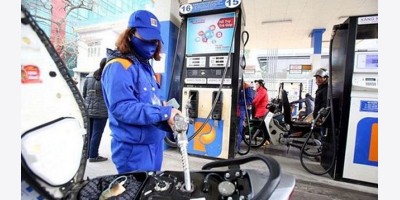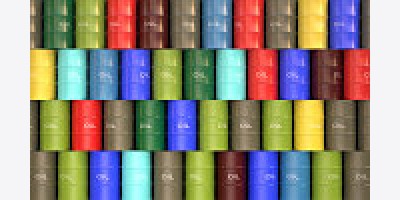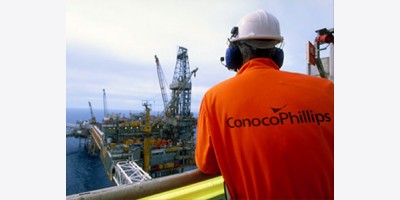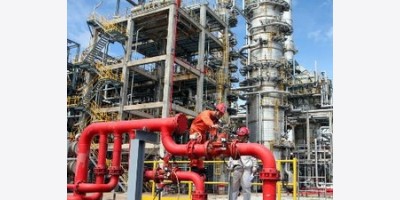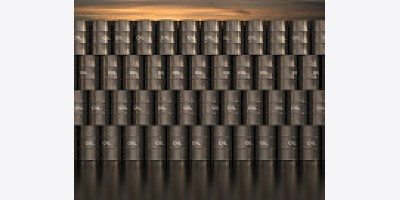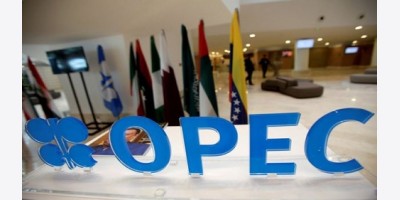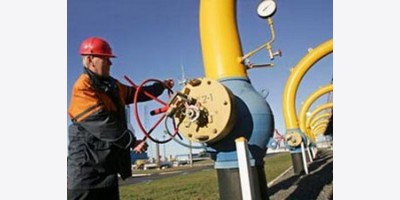By Rakteem Katakey and Debjit Chakraborty Apr 19, 2014 1:31 AM GMT+0700 0 Comments Email Print
Reliance Industries Ltd. (RIL), operator of the world’s biggest oil refinery complex, reported its highest quarterly profit in more than two years as a decline in the value of the rupee boosted export earnings.
Net income in the quarter to March 31 for the company controlled by billionaire Mukesh Ambani, India’s richest, matched analyst estimates as refinery margins recovered from the previous three months, and it starts projects that will add to revenue. Higher profit is making analysts the most bullish on the company’s stock in more than two years, while its shares have increased to the highest since May 2011.
Profit increased to 56.3 billion rupees ($933 million), or 17.4 rupees a share, in the quarter from 55.9 billion rupees, or 17.3 rupees, a year earlier, the Mumbai-based company said in a stock exchange filing yesterday. Sales rose 13 percent to 951.9 billion rupees, missing the median estimate of 1 trillion rupees of 24 analysts surveyed by Bloomberg.
“Sales during the quarter could have been better but for the declining gas production and lower refinery production due to a shutdown in February,” said R.K. Gupta, managing director of New Delhi-based Taurus Asset Management Co.
The company’s stock, which has gained 20 percent since Feb. 28, compared with a 15 percent increase in the 10-member S&P BSE Oil Index, rose 1.9 percent to 959.10 rupees on April 17. The markets were closed yesterday for a public holiday.
Rupee Weakness
The company operates two refineries with a combined capacity of 1.24 million barrels a day located next to each other at Jamnagar in the western state of Gujarat. They have the ability to process cheaper, lower grades of crude into high-value products for use in Europe and the U.S.
A majority of the fuels and chemicals Reliance makes are exported and paid for in dollars. A lower value of the rupee against the greenback increases export earnings when converted to the local currency.
The rupee averaged 61.80 per dollar in the quarter ended March 31, compared with 54.20 a year earlier. The currency has gained 2.5 percent this year, touching an eight-month high on March 28.
Reliance earned $9.3 for every barrel of crude it turned to fuels in the quarter, compared with $10.1 a barrel a year earlier and $7.60 a barrel in the preceding three months, the company said.
Net Debt
The company had 881.9 billion rupees of cash and equivalents as of Mar. 31, deposited in banks, mutual funds and government securities, versus debt of 899.7 billion rupees.
Reliance is building a plant that will turn petroleum coke, a byproduct from the refinery, to gas that will be used to produce power for its factories. Once operational, this will widen refining margin by as much as $2 a barrel.
Out of the planned capital expenditure of $12 billion to $13 billion for the petrochemical and refinery businesses, the company has already spent 30 percent and the rest will be deployed over the next 18 to 24 months, Alok Agarwal, chief financial officer, told reporters in Mumbai yesterday.
The price difference between light grades of crude and heavier varieties widened to an average $5.10 per barrel in the quarter from $4.50 a year earlier, Nisha Sharma, a Mumbai-based analyst with KR Choksey Shares & Securities Ltd., wrote in an April 9 report. A bigger gap benefits Reliance because it can process heavier grades of crude.
Brent crude, a lighter variety, averaged $107.87 a barrel in the quarter in London trading, compared with $112.64 a barrel a year earlier.
Will Outperform
Over the next three years Reliance’s core business of refining, petrochemicals and gas production will boost earnings before interest, depreciation, tax and amortization by 25 percent as projects including a gas-cracker plant and petroleum coke gasification facility start, Prayesh Jain, a Mumbai-based analyst with IIFL Holdings Ltd., wrote in an April 1 report.
“While the global environment has been moderately improving for refining margins and petrochemical spreads, Reliance will outperform the benchmarks by a significant margin,” Jain wrote.
JP Morgan analysts led by Samuel Lee expect gas output from the company’s biggest deposit off India’s east coast to increase to as much 16 million cubic meters a day by the end of this year as Reliance and its partner BP Plc (BP/) repair producing wells in the KG-D6 block, according to an April 2 report. It may produce 12.5 million cubic meters a day in the quarter ended March 31, according to KR Choksey Shares.
Gas Prices
India’s Election Commission on March 24 ordered the federal oil ministry to defer an increase in prices of gas produced from the nation’s fields from April 1 until national polls are over. Reliance and state-run explorers including Oil & Natural Gas Corp. would’ve benefited from the gain in rates from the current $4.20 per million British thermal units.
Elections to choose India’s next government started April 7 and will end May 12 with results scheduled to be announced on May 16.
For every $1 increase in gas prices and at a production rate of 15 million cubic meters a day, IIFL estimates Reliance’s earnings per share will gain by 1.5 percent in the year that began April 1.
“Once a new government comes and higher gas price comes into effect, we will see better performance,” Taurus Asset’s Gupta said.
To contact the reporters on this story: Rakteem Katakey in New Delhi at rkatakey@bloomberg.net; Debjit Chakraborty in New Delhi at dchakrabor10@bloomberg.net
To contact the editors responsible for this story: Jason Rogers at jrogers73@bloomberg.net Abhay Singh, Sam Nagarajan




